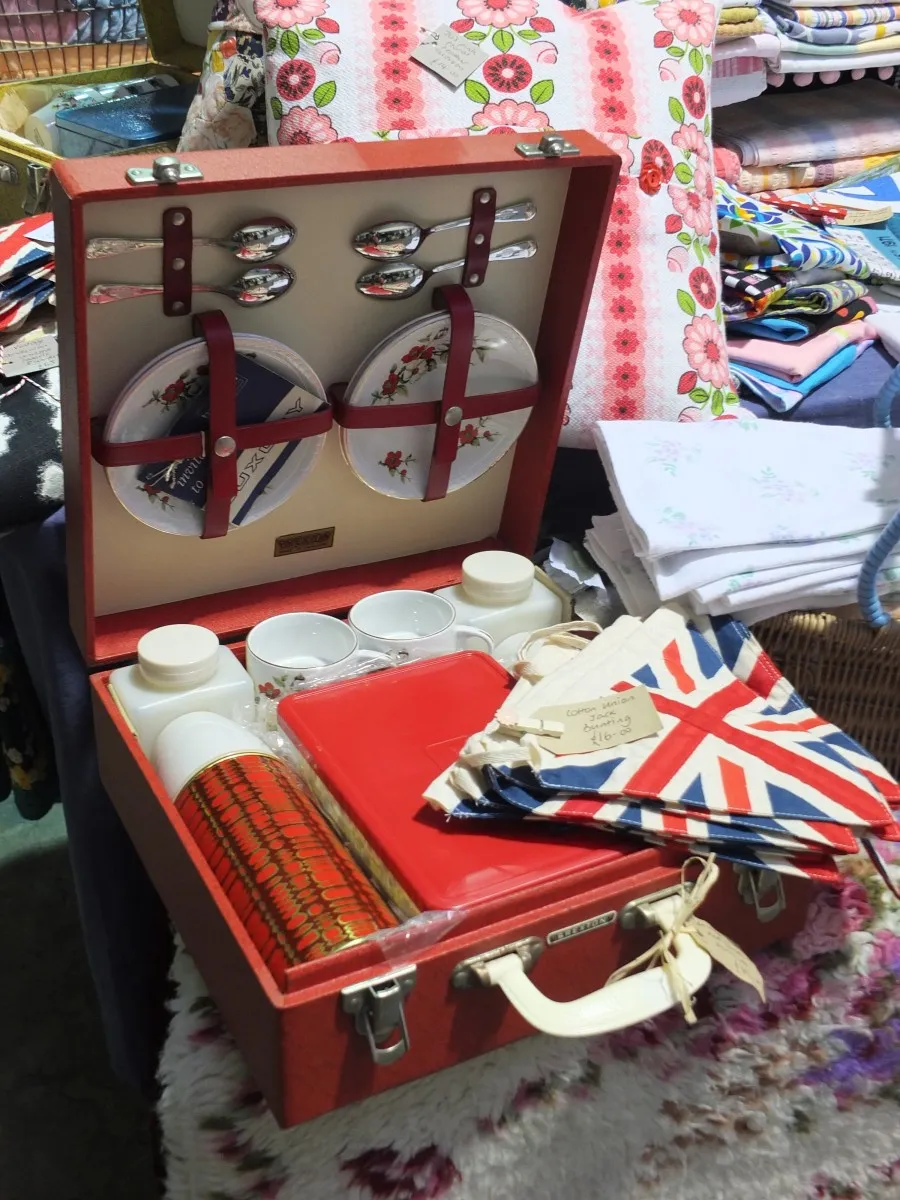As Easter draws near and glimpses of spring arrive, I'm welcoming the dainty heads of snowdrops as they emerge and my thoughts have turned to jolly picnic jaunts with cheery china and slabs of cake. My campaign for the new season? To bring back the vintage picnic set.
After the 1920s motoring heyday saw picnics reach a decadent peak (with Fortnum and Mason regularly producing 40-person feasts of lobsters and champagne), they enjoyed a resurgence in the early 1950s as the nation emerged from the frugal years of the war. Carefree weekend outings were the order of the day.
As cars became increasingly available and affordable throughout the 1950s and 1960s, companies such as Brookes and Sexton (manufacturing under the name of Brexton) began producing sweet picnic sets, such as this red one (below).
Using high quality materials, they came in small suitcases in a variety of bold colours with tableware to cater for two, four, six or eight. They neatly stored china cups, saucers and plates produced by Gray’s Pottery of Stoke-on-Trent with accessories to match the case. Cutlery, beakers, metal food tins, glass bottles and the all-important Thermos flask all had a space to be stashed.
Later in the 1950s the Tupperware boom saw plastic food containers replace the metal tins and containers for milk and sugar were added. I even discovered a case with a neat fold-over serving board.
Rexine, a new material at the time, was used to cover the outer case and consisted of a durable coated cloth resembling leather. My own set has matching dark maroon flasks coated in the same fabric. I can't help but admire how such careful attention to detail went into the design and layout of these sets, down to the matching flasks.
Brextons today are highly sought-after. At the time their popularity was such that the company produced a special edition to commemorate the coronation of Queen Elizabeth II in 1953. Find one of these, or indeed any set in complete and pristine condition and you will have struck picnic gold.

Though there are many incomplete examples, I have been heartened to find the odd missing item for sale online. All the accessories were marked with the Brexton logo, which helps with identifying bonafide pieces.
Prices start at a modest £25 for a case but you can expect to pay £200 plus for the rarer sets in mint condition. Vintage fairs, markets and online shops are the best hunting grounds.
If you are looking for a piece of older picnicking history you could start your hunt as far back as 1682. The first mention of pique-nique appears in a French publication, where it refers to a feast where all the guests brought a share of the food. The word picnic first appeared in England in a letter dated 1748 in which Lord Chesterfield associates it with conversation, card-playing and drinking, and it comes into more common parlance after the Royal Parks were opened to the public in 1789. A Picnic Society was even formed in the early 19th Century with members sharing refreshments and no particular host.
It’s a challenge to find picnic sets much older than the early 1900s when the first cased sets of tableware for eating outdoors were produced. Expensive though they are, there’s a nostalgic glamour to bound leather cases by the likes of Louis Vuitton. The Pullman Gallery tend to have a selection worth browsing.
There are also plenty of vintage-inspired modern picnic sets available, which are perfect for spring picnics now that lockdown restrictions have eased in Britain. Now pass me the Battenburg would you dear?
Words: Sarah-Jane Hosegood
Photography: Joanna Henderson
Styling: Kiera Buckley-Jones